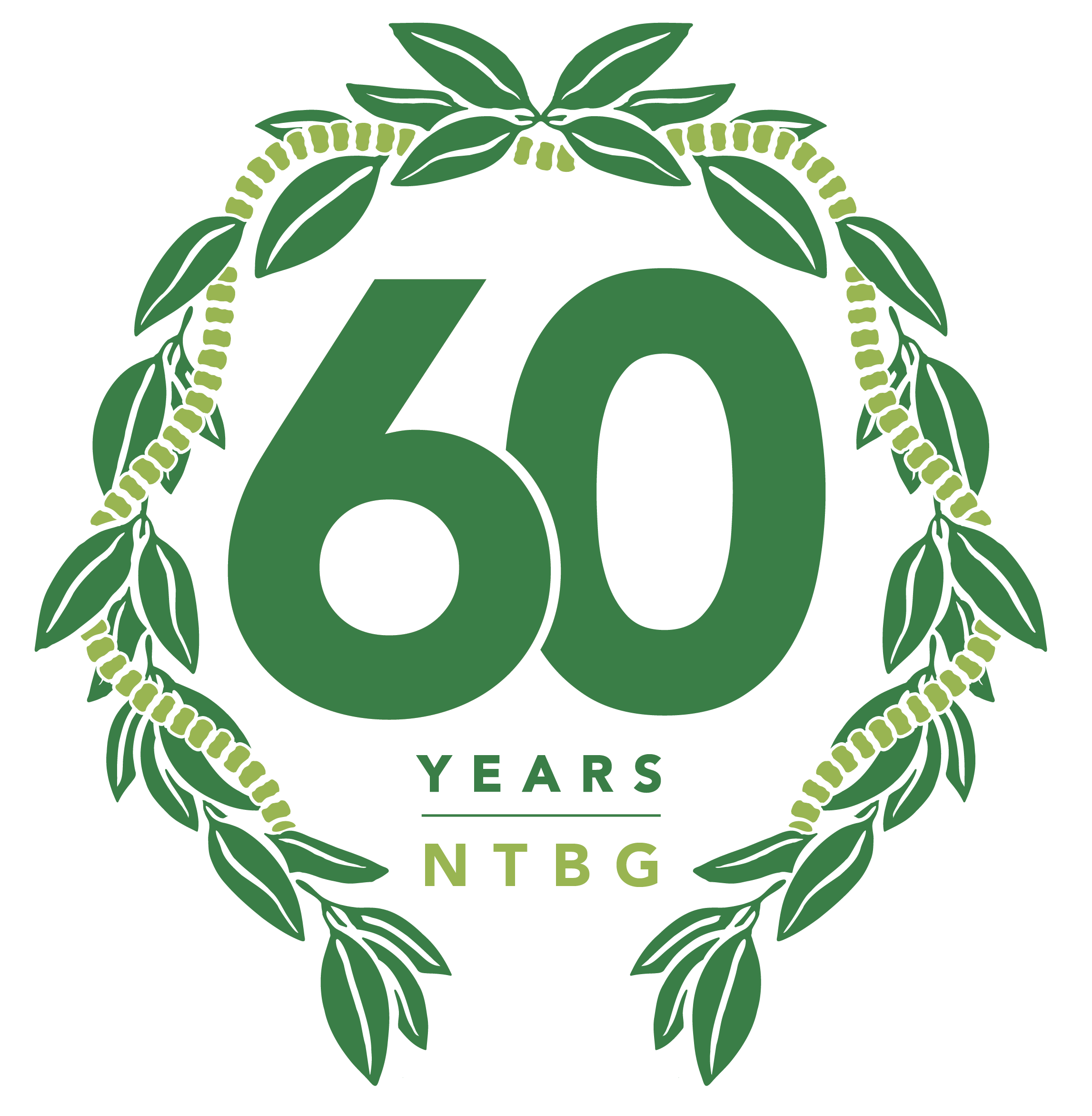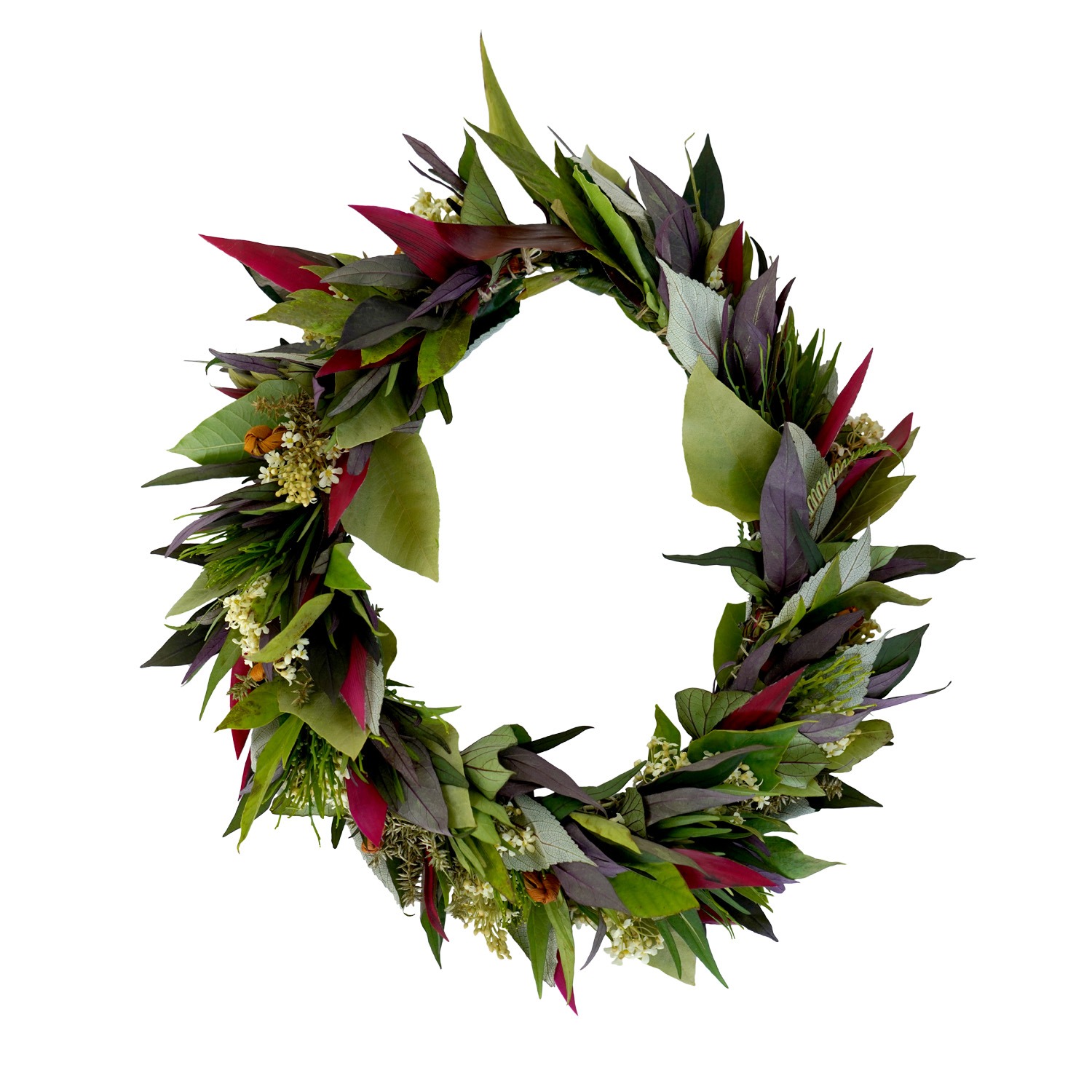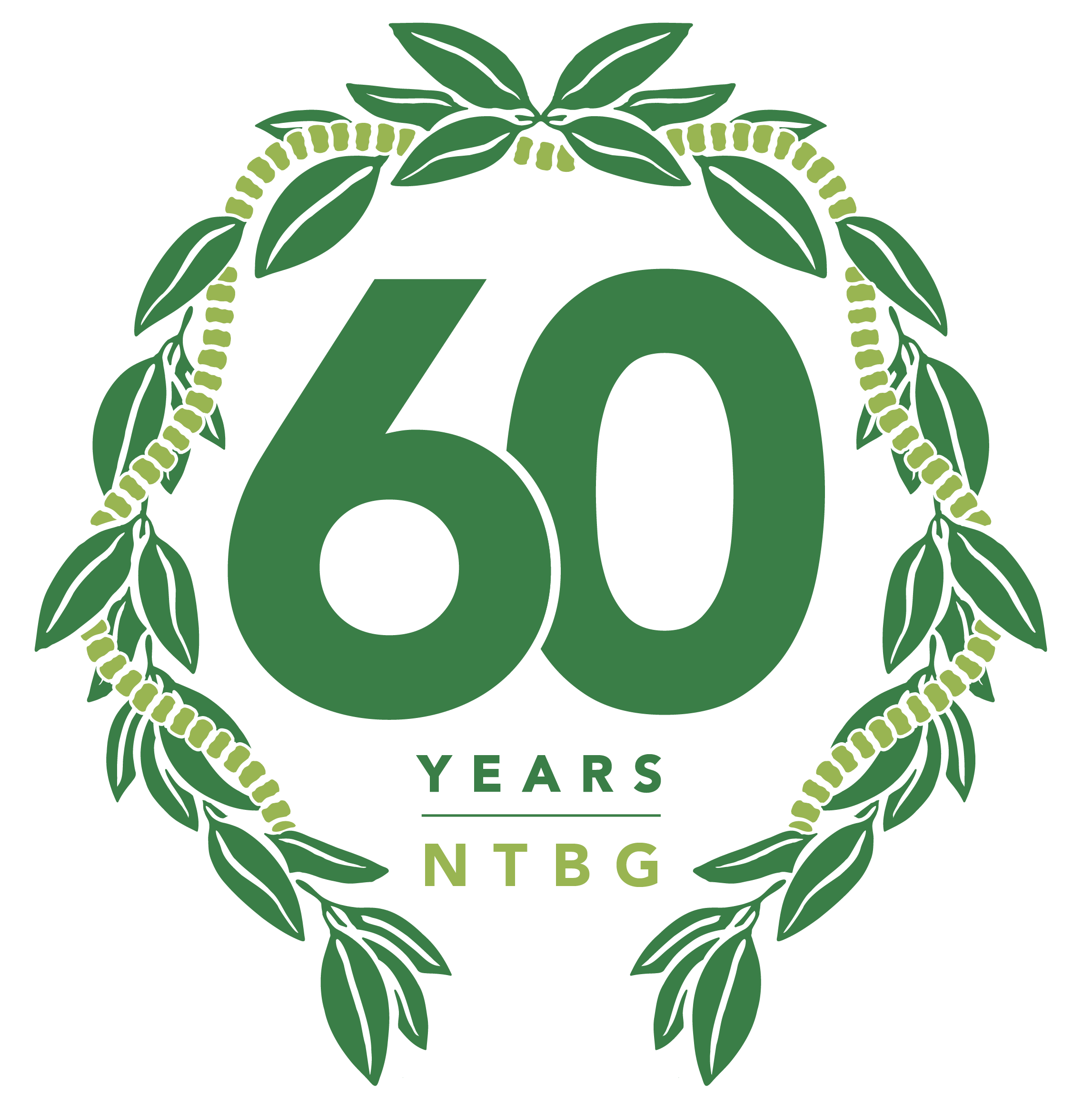
2024 marks the 60th anniversary of the National Tropical Botanical Garden. Every month we will weave a lei for you, one that brings together plants and stories from our five botanic gardens. Created by Horticultural Assistant Hayley Walcher, August’s lei highlights the native plants and heritage crops that can beautifully intertwine to make a highly-productive agroforest. We’re passionate about agrofrestory, modeling this approach through our Regnerative Organic Breadfruit Agroforestry (ROBA) demonstration. Learn more here!


Just $25 powers a year of impact for plants and people no matter where you live. You’ll also receive The Bulletin magazine and invitations to special member events.
Join us
Being in Hawaiʻi, the most common and traditional thing you can do is get a lei for someone when they have something big occurring like a graduation or a birth. But lei is so much more than a gift, and my favorite thing I’ve heard is that lei is a love language. When making a lei, a lot of thought and care goes into each step, from harvesting materials—considering the time of day and the symbolic meaning of the plants—to the preparation, including cutting and organizing the materials. The crafting process requires time to ensure the lei is well-constructed, with the right plants placed in the right spots, maintaining uniformity, and infusing your best mana into it. Finally, you must keep it in perfect condition until you gift it to someone. Creating a lei truly expresses your love and the meaningfulness of adorning someone with such a thoughtful gift.
I wanted to highlight species that are often overlooked when creating a lei, so I chose an ‘agroforest’ theme. Agroforests are vital to Hawaiʻi and food security, and they can also provide materials for lei-making. Planting your own materials is essential to avoid putting extra stress on our forests by harvesting wild plants. In my lei, I included kukui for enlightenment, ʻulu leaves and sheath for resilience and perseverance, and ‘uala to honor women farmers. Additionally, I incorporated fillers that are culturally significant and commonly found in agroforests, such as māmaki, ahu’awa, moa fern, and ti.
My relationship with native and cultural plants is extremely intimate. I’ve been fascinated by ethnobotany for years, which is a major reason I work directly with plants. It’s incredible to study indigenous cultures and learn about their knowledge of plant uses and their understanding of plants for medicine, ceremony, tools, housing, clothing, and food. They were and are amazing horticulturists, taking meticulous care of their crops. Every plant plays a vital role in the ecosystem, whether we benefit from it directly or indirectly. However, modern culture and language often prioritize humans above all else, influencing how we view plants today.
If I could offer advice on deepening relationships with plants and places, I’d highly recommend being open and eager to learn. With around 1,400 native plants in Hawaiʻi, there’s surely one or two that will resonate with you. If you’re connected to an ahupua’a, you’ll likely find a dominant plant in that area that holds significance for you. Exploring the ethnobotany of a plant can reveal how it was used and what it provided to the people. If you’re interested in learning about plants but aren’t sure how to start, the iNaturalist app is a great resource. It allows you to take photos and identify plants, with GPS tagging to help you locate and visit specific plants in person. This is particularly useful when you’re in a native forest and unsure of what you’re seeing.
There are many kumu and practitioners to learn from, as well as ethnobotany resources available online and in books. Lastly, I encourage you to buy native and cultural plants for your home. Growing a plant deepens your relationship with it tenfold; nurturing and caring for it will inevitably lead to greater knowledge and appreciation over time.

Discover all of our lei legacy stories and check out upcoming events in celebration of NTBG’s 60th anniversary.